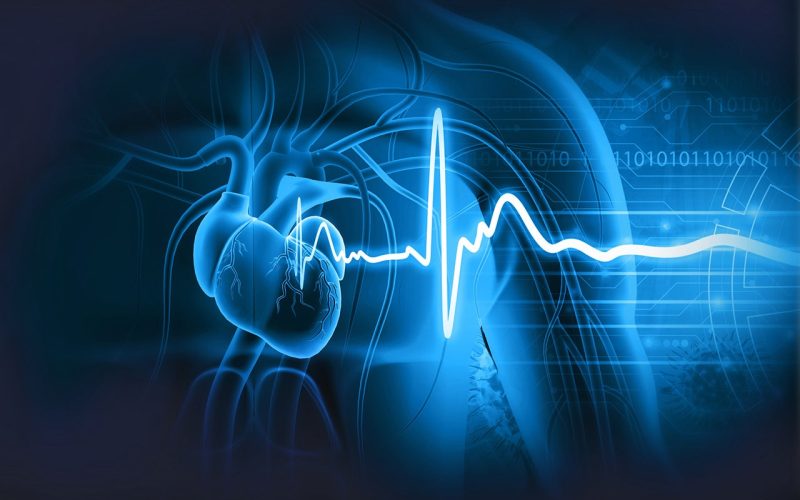Dr. Martin Fast and his colleagues at UMC Utrecht have received a 1.5 million euro grant from the Dutch Research Council (NWO) to improve MRI-guided strategies for radiotherapy ablation in and around the heart. Read more about the aim of this project, and how its results can improve the outcome of patients with cancer and cardiac disease.
In our aging society, cancer and cardiovascular diseases pose an ever-increasing burden on individuals, their next of kin, healthcare providers and ultimately also taxpayers. Existing invasive treatment modalities often struggle to improve long-term outcomes for patients and may result in side-effects.
Especially the treatment of ventricular tachycardia (VT) with catheter ablation can lead to serious complications, including stroke and valve damage. VT typically recurs in 30% of all patients within one year of catheter ablation. Mortality after invasive VT ablation is 45-60% after 5 years, with worse outcomes for patients that are technically or medically inoperable. These poor outcomes strongly signal the need for better non-invasive treatments.
Stereotactic radiotherapy is a non-invasive ablative treatment modality that is increasingly utilized in radiation oncology. Recently, stereotactic arrhythmia radioablation (STAR) has emerged as a highly effective salvage treatment option for VT patients.
The heart is increasingly regarded as one of the most critical structures in thoracic radiotherapy. Targeting radiation precisely in or around the heart is extremely challenging due to the vicinity of many radiation-sensitive structures. Additionally, the rapid periodicity of cardiac motion presents an entirely new challenge for radiotherapy, which only recently learned to cope with the much slower respiratory motion.
Effective strategies for minimizing radiation induced collateral damage are the reduction of the treatment volume while ensuring target coverage, and a better understanding of the dose-effect relationship in cardiac tissue. Both goals can only be accomplished by anatomical and functional cardiac imaging at the time of treatment. However, the additional dynamic complexity of cardiac motion and function is still largely ignored in radiotherapy due to a lack of robust and sufficiently fast imaging techniques, and cardiac-focused real-time motion management strategies.
When adapting radiotherapy to account for cardiac motion, the biggest challenge is target visibility. A new generation of hybrid magnetic resonance imaging (MRI) + radiotherapy linear accelerator (MR-linac) devices, pioneered at UMC Utrecht, has made online MRI-guidance a clinical reality in many hospitals across the globe.
The advent of MR-linacs 5 years ago brought the power of MRI into the radiotherapy treatment room. The promise of this system is to visualize the patient’s anatomy and adapt treatment on ever shorter timescales, ultimately resulting in fully personalized dose deliveries.
As of today, however, MR-linacs have not realized their full potential, especially in the very challenging central thoracic region. The main roadblocks here are the complex cardiorespiratory motion interplay that continuously shifts the treatment target relative to the treatment beam, and concerns about radiation-induced toxicity in mediastinal organs such as the heart itself.
In this project called MEGAHERTZ, dr. Martin Fast and his colleagues Nico van den Berg, Bas Raaymakers, Astrid van Lier, Stefano Mandija, Firdaus Mohamed Hoesein and Joost Verhoeff will combine cardiovascular magnetic resonance (CMR) imaging with MRI-guided adaptive radiotherapy to dramatically enhance cardiac targeting for stereotactic arrhythmia radioablation, and cardiac sparing for radioablation in the central thorax.
“To this end, we will first develop advanced MRI hardware and CMR sequences for the MR-linac, that are geared towards anatomical and functional cardiac assessment”, Martin explains. “We will then demonstrate how CMR-derived cardiac information will improve radiotherapy through real-time treatment adaptation. To fully harness the potential benefits of cardiac MRI-guidance on the MR-linac, we will develop dedicated MR imaging equipment, cardiovascular MRI sequences, and real-time radiotherapy adaptation strategies. I am especially pleased that within MEGAHERTZ we have assembled a stellar consortium of industrial partners, namely Elekta AB, Philips Healthcare, Modus QA, Tesla Dynamic Coils and Futura Composites.”
Photo: dr. Martin Fast

